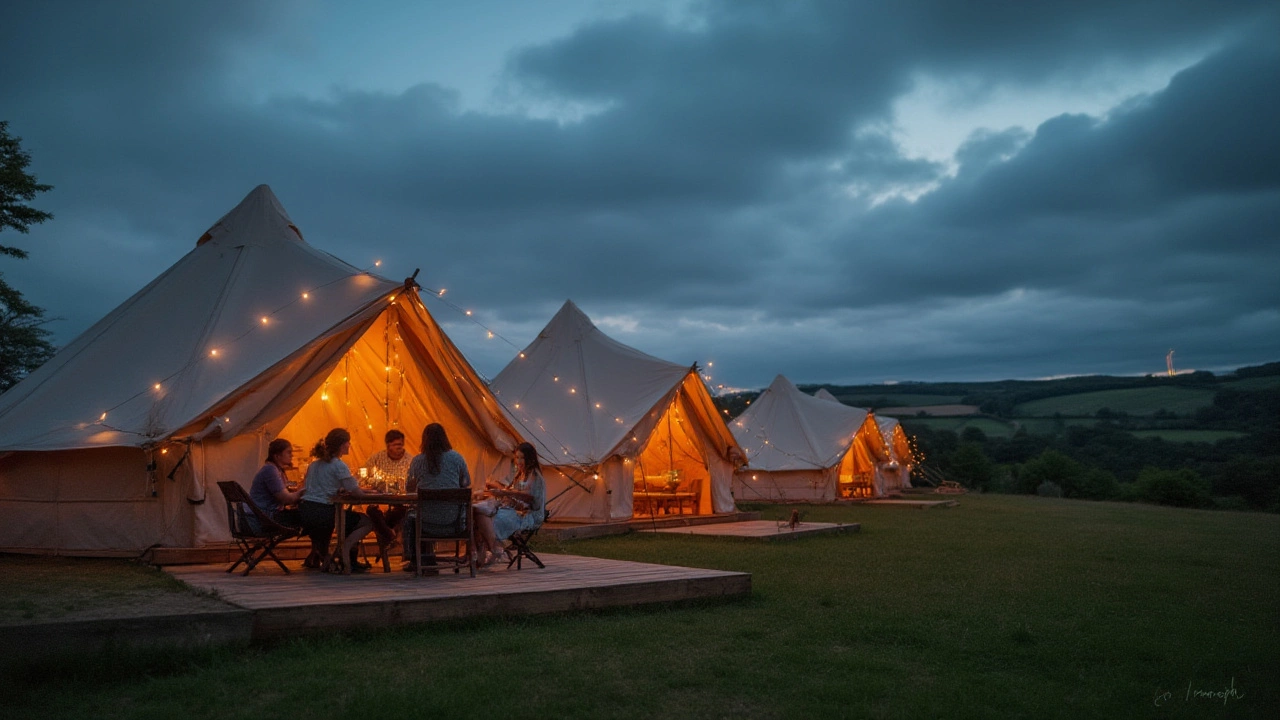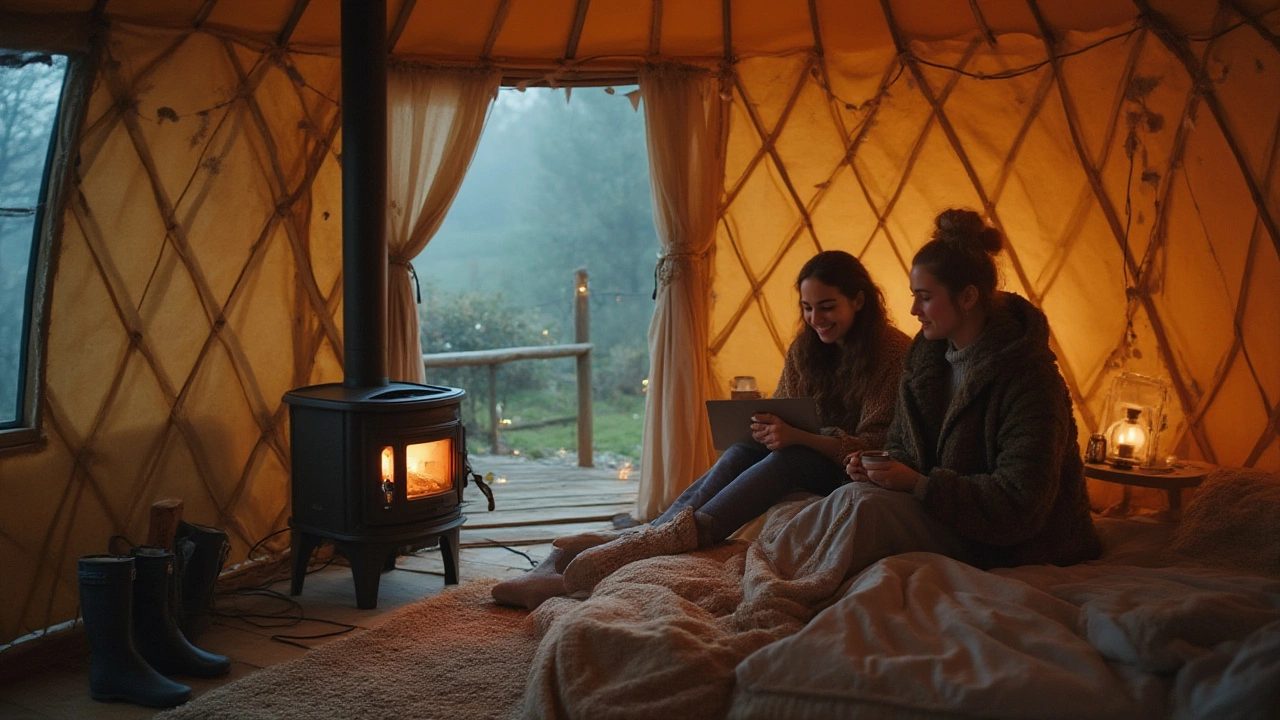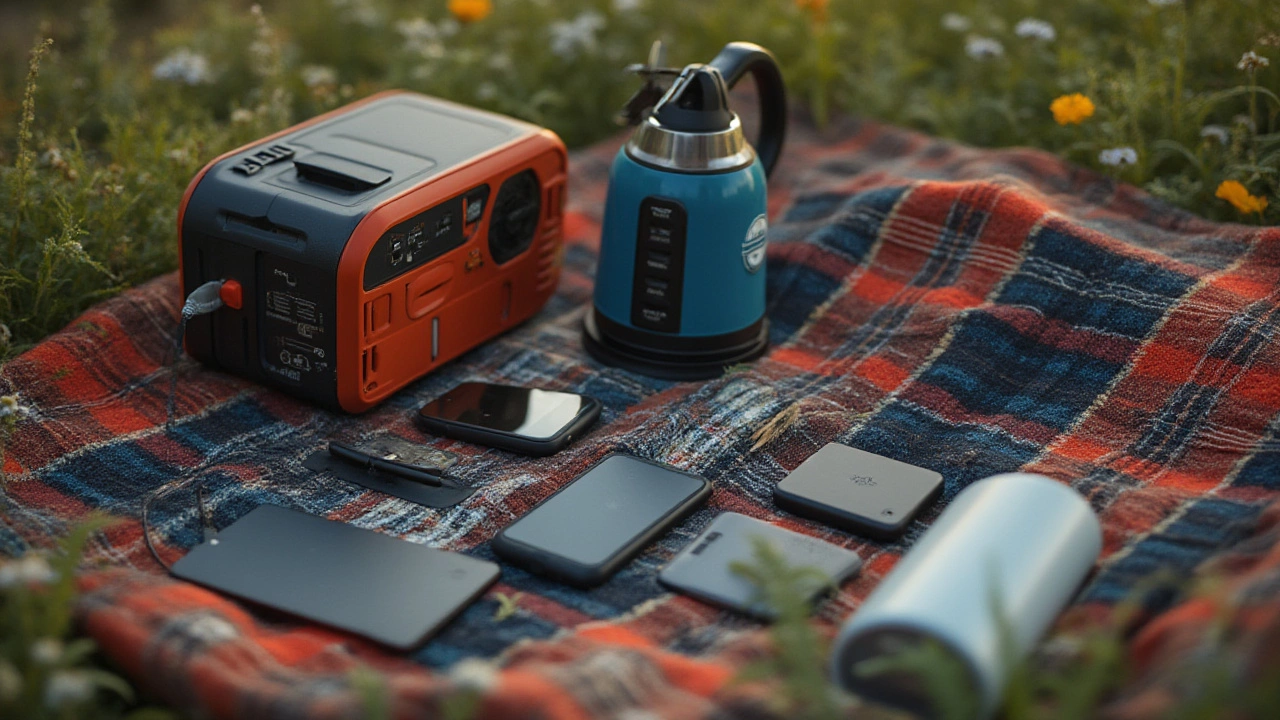Does Glamping Have Electricity? Essential Power Tips and What to Expect

If you’ve ever tried to charge your phone by firelight, you know the struggle is real. Glamping dangles the fantasy of nature with comfy perks, but electricity? That question comes up every time I pack up the car with Liora’s plush unicorn and Nimbus the cat meowing over which window seat is his. Are fairy lights and heated blankets part of the deal, or is it just you, a tent, and your battery at 5%?
What Kind of Electricity Is Available When Glamping?
The electrical situation at glamping sites runs the whole spectrum. Some places are more outdoorsy than your average living room, sporting solar-powered lanterns, portable generators, and maybe just one communal charging outlet hiding in the lounge. Others have everything you’d find at a boutique hotel, from reading lamps beside your velvet bedspread to Instagram-worthy mini fridges humming quietly at your feet.
Here’s the reality: about 65% of commercial glamping sites across the UK and US now offer individual electricity hookups, according to a 2024 glamping provider survey. That covers yurts, safari tents, upscale airstreams, and those wooden pods that make you feel like you stepped into a hobbit’s weekend getaway. If you’re staying somewhere luxurious, chances are you’ll get plugs, bedside lights, and USB charging right in your tent—or pod, cabin, or treehouse. Don’t be surprised if there’s even a hair dryer waiting for you.
But smaller, off-grid or eco-focused glampsites usually go lighter on the electrical luxuries. Many stick to solar or wind for running essentials, which can mean dimmer lighting at night, USB-only charging, and rules about not plugging in big energy guzzlers. Some sites skip traditional electricity altogether—you’ll be rocking headlamps and battery-powered fairy lights, especially in conservation zones or back-to-basics experiences.
Check out the variety:
- Full-service glampsites: Power outlets, mini fridges, tea kettles, A/C, WiFi, electric lighting.
- Eco or off-grid sites: Solar lights, communal charging stations, heated blankets (if you’re lucky!), and generators that might only run for a couple hours daily.
- Traditional campsites with “glamping upgrades”: Often offer no power at all, but plenty of cozy bedding and perhaps hand-warmers in your welcome basket.
It pays to ask in advance. Always check the specifics on your booking page or just drop an email. My first glamping trip, I thought a "heated tent" guaranteed actual outlets for devices. Nope. It was a heated water bottle. Lesson learned: small words, big difference!

How to Stay Powered Up Glamping Without Standard Outlets
When you discover your safari tent relies on fairy lights and solar lanterns, how do you stay connected—or just keep your morning coffee hot? Glamping without conventional electricity does not have to mean roughing it. There are some clever ways families (and pet-loving control freaks like me) keep their gadgets alive and their cozy factor maxed out.
First rule: think portable. External power banks are the MVPs of glamping. The newer models pack plenty of charge and can sometimes handle a laptop as well as phones, e-readers, and those tiny camp fans that save you in mid-July. If you have kids who watch shows at bedtime, invest in a solar-powered charger or a portable battery generator. Some even have outlets for small appliances (think electric teapot, not hair dryer). Just know: the more power you need, the bigger the device.
If you’re driving in, take advantage of your car. Most vehicles since 2015 have USB charging built-in, and you can get handy adapters for anything else. On our last road trip, Liora’s nightlight and my Kindle both survived a rainy stretch thanks to a clever dashboard charger.
What if you want heat or light? Many eco-focused glampsites hand out battery or solar-powered lanterns, and you can buy surprisingly bright collapsible lights that weigh almost nothing. For cold nights, I swear by rechargeable hand warmers and USB-heated blankets—they’re safer than gas or wood heaters and surprisingly efficient for a warm snuggle.
Another tip: manage your energy like a pro. Put phones in airplane mode overnight (less drain), go for offline playlists and audiobooks, and bring a spare charging cable in case a squirrel decides yours looks tasty—you’d be surprised. I stash a lightweight extension cord, too, just in case that precious power outlet is across the room or outside my tent.
When in doubt, read the fine print on glamping bookings. Look out for phrases like “shared power supply,” “solar power only,” or “please avoid high-wattage items.” If the site advertises a hot tub, it’s almost guaranteed to have decent electricity—nobody runs a heated tub off solar panels (unless they have spent a fortune on solar arrays).
To help you plan, here’s a quick reference for common glamping amenities and their typical power requirements:
| Amenity | Power Needs | Electricity Source |
|---|---|---|
| Phone Charging | 5-10W | USB outlet, solar power bank, plug |
| Mini Fridge | 40-80W | Standard outlet only |
| Lighting (LED/solar) | 3-10W | Solar, battery, plugin |
| Electric Kettle | 1000-1500W | Standard outlet |
| Heated Blanket | 20-50W | USB, battery, outlet |
| Hair Dryer | 800-1800W | Standard outlet only |

Choosing the Right Glamping Site for Your Electric Needs
Okay, so you know what you want: lamps that won’t burn your tent down, a way to refrigerate breakfast yogurt, and maybe a proper charger for your drone or camera. Picking the right glamping site makes all the difference. Here’s how to size up your options for the ultimate balance of nature and modern comfort.
Start by narrowing your wish list. If electricity is a must—like for medical devices, work laptops, or those wild early-morning hair straightener emergencies—use filters on glamping sites for “private power” or “en suite electric.” Luxury glampsites almost always include electricity as a basic amenity. Signature yurts, safari tents with king-size beds, cabins with hot tubs—if they feature A/C, heating, or posh bathroom lighting, you’re safe.
Eco and off-grid options are more about digital detox, with low-impact power by design. That’s part of their charm. If you’re itching for a star-lit view with minimal distractions, these might be perfect. Just be honest with yourself—and your travel buddies—about what power you actually need. I once convinced my skeptical sister to join me at a solar yurt in Cornwall. It was magical... until she realized her curling iron was persona non grata. (We both survived. It actually sparked a whole no-makeup selfie experiment. Win!)
Read reviews with a sharp eye. Guests mention power more than you might expect. Look for clues: "plenty of charging spots," "fridge kept everything cold," or, less ideal, "bring a battery for cameras." If electricity is spotty, hosts usually warn you (nobody wants angry campers with dead phones).
If you have special requirements (medical devices, baby bottle warmers, CPAP machines), reach out before booking. Most hosts are upfront. Some will even throw in an extra battery bank or make special arrangements for those must-have gadgets.
- Ask about generator schedules: Some off-grid sites only run power at certain hours.
- Watch for eco-initiatives: Solar charging in communal kitchens, USB ports, and creative low-power solutions.
- Book upscale for guaranteed luxury power. Want a Nespresso machine inside your tent? Those sites exist—and show it off in their amenities.
- Bring your own backup: Even with outlets, storms or outages happen. Pack your trusty power bank.
Glamping blends the best of wild and civilized living, but not all comfort comes plugged in. Whether you want to stream movies in a heated bubble dome or listen to the rain with a lantern and Nimbus curled at your feet, one thing’s for sure: knowing what power awaits means the difference between a glowing experience and a blackout bummer. Glamp on, and keep that phone at 100%... at least until that first roasted marshmallow selfie.